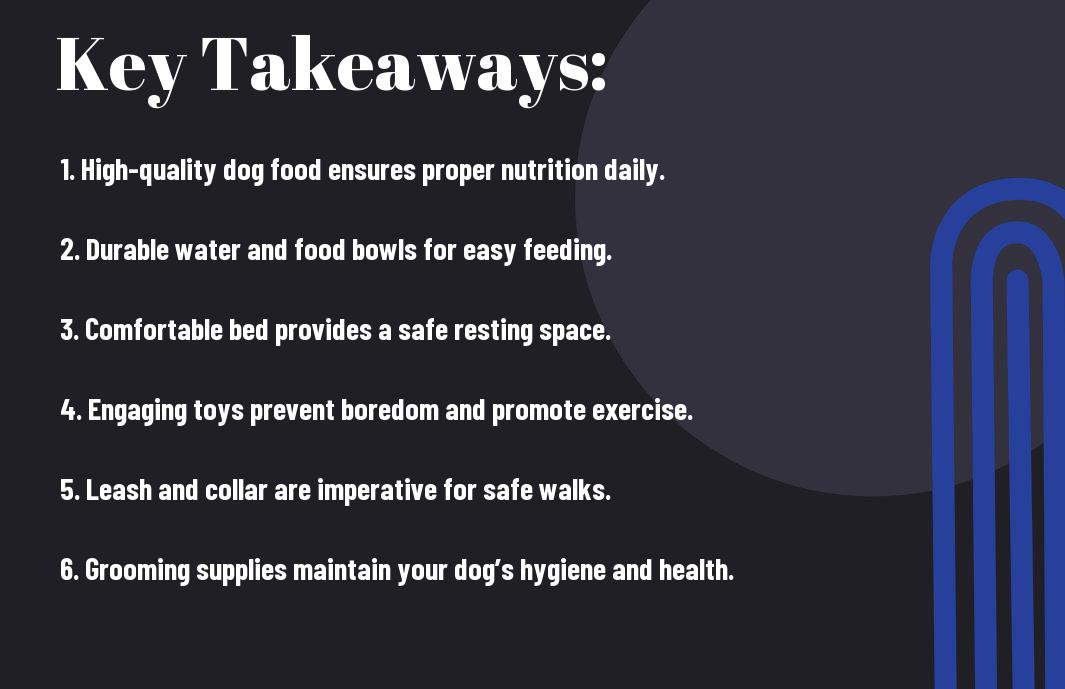There’s a unique bond you can share with your pet bird, but sometimes that bond can become too strong, resulting in an overly attached feathered friend. This attachment can lead to distress for both you and your bird, making it imperative to establish healthy boundaries. In this guide, you’ll learn effective strategies to encourage your bird’s independence while maintaining a loving relationship. By understanding your bird’s behavior and implementing these tips, you can ensure a happy and balanced environment for both of you.

Understanding Attachment in Birds
Before you can effectively address an overly attached bird, it’s necessary to understand what attachment looks like in avian companions. Birds, like many pets, can form strong bonds with their caregivers. This desire for closeness and companionship can lead to a healthy relationship; however, in some cases, it can become excessive, manifesting as an over-attachment that may disrupt both your life and your bird’s well-being.
What Causes Over-Attachment?
For many bird species, especially parrots, social bonding is vital for their emotional health. In the wild, they live in flocks and rely on social interactions for survival. When you bring a bird into your home, it naturally seeks that same connection. If your bird perceives you as its primary companion, it may start to exhibit clingy behaviors as it tries to establish a bond. Factors such as insufficient social interaction with other birds, inadequate stimulation, or even changes in your routine can exacerbate these feelings of attachment.
Additionally, certain species are more prone to forming intense bonds than others. For instance, conures, cockatoos, and lovebirds are known for their social nature. If your bird’s needs for socialization and mental engagement aren’t met, it may become overly dependent on you for emotional support, which can lead to destructive behaviors if left unchecked.
Signs Your Bird is Overly Attached
Clearly, you should look out for specific behaviors that indicate your bird has become overly attached. Some signs may include following you everywhere, excessive vocalization when you’re not present, or showing agitation and distress whenever you leave the room. Persistent neediness can also manifest through frequent attempts to perch on your shoulder or lap, diminishing your personal space and independence.
The signs can vary, but understanding these behaviors is crucial for maintaining a healthy relationship with your feathered friend. For example, should you notice that your bird is displaying signs of anxiety, such as panting or biting, whenever you aren’t around, it may indicate that their attachment has reached harmful levels. Additionally, over-attachment can lead to negative behaviors such as excessive screeching or self-mutilation. It’s vital to address these behaviors early on to prevent them from escalating and to ensure both you and your bird can enjoy a balanced, healthy bond.

How to Manage Overly Attached Behavior
Any bird can become overly attached, leading to behaviors that may become problematic. Understanding how to manage these behaviors is important for both you and your feathered friend. There are several strategies you can implement to ensure a healthier relationship with your bird, promoting independence while still providing love and care.
Gradual Independence Training
One effective method to address overly attached behavior is to implement a program of gradual independence training. This involves slowly increasing the amount of time your bird spends away from you without feeling anxious or stressed. Start by placing your bird in a safe, comfortable environment and leaving the room for a few minutes. Gradually extend the time you are apart, allowing your bird to adjust to your absence.
It’s important to reward your bird for remaining calm during these short separations. Use treats, praise, or engaging toys as incentives. This positive reinforcement will help your bird associate your absence with positive outcomes, encouraging them to become more comfortable with independence over time.
Establishing Boundaries
Manage your bird’s expectations by establishing clear boundaries in your interactions. Set specific times for play, bonding, and training to create a routine that your bird can rely on. This structure helps your bird understand that while your time together is meaningful, it’s not the only aspect of its life. Avoid excessive cuddling or constant attention, as this can reinforce reliance on your presence.
Training your bird to respect these boundaries may require patience and consistency. If your bird attempts to violate these boundaries, gently but firmly redirect their behavior. For instance, if they try to climb onto your shoulder every time you sit down, calmly place them back on their perch. This approach reinforces the idea that you are in control, and it’s important for your bird to develop its own sense of security.
Encouraging Self-Entertainment
Now, to foster a sense of independence, it’s crucial to encourage your bird to engage in self-entertainment. Provide a variety of stimulating toys that promote mental engagement and physical activity. Puzzle toys, for example, can challenge your bird and keep it occupied for extended periods. Rotate these toys regularly to maintain freshness and interest.
Consider creating a safe, enriching play area where your bird can explore and entertain itself when you are busy. Ensure that they have access to items that can be pecked, shredded, or moved around. Introducing branches, mirrors, and safe household items can replicate a more natural environment, helping your bird to learn to play independently.
Gradual incorporation of these strategies not only aids in managing overly attached behavior but also promotes a fulfilling and healthy environment for your bird. Bear in mind, a well-adjusted bird is a happy bird! By providing opportunities for independence while maintaining a loving atmosphere, you set the stage for a wonderfully balanced relationship.

Tips for Fostering Healthy Relationships
Despite the challenges you may face with a bird that’s overly attached, it is possible to nurture a healthy relationship. Fostering independence is crucial for your bird’s well-being, and by incorporating certain techniques, you can balance attachment with freedom. Here are a few tips to help you on this journey:
- Encourage independent play outside of your presence.
- Utilize positive reinforcement to promote interaction with toys and activities.
- Gradually increase the time apart during the day.
- Create a diverse environment that stimulates curiosity and self-exploration.
Thou must remember that shifts in behavior will take time and patience. Each bird is unique and may respond differently to these strategies.
Socialization Techniques
With socialization techniques, you can help your bird learn to thrive independently. Start by introducing your bird to other trusted individuals, allowing them to experience affection and interaction outside of your presence. Gradually introduce new spaces, people, and activities to broaden their social exposure. This approach counteracts excessive attachment and fosters healthier connections.
Incorporating playdates with other birds or having friends interact with your pet can also facilitate socialization. This not only helps to alleviate your bird’s overdependence on you but also enriches their life with new experiences. Ensure that introductions happen in a controlled, stress-free manner, as this will contribute to a positive outcome.
The Importance of Routine
Relationships thrive on consistency, and establishing a daily routine is fundamental for both you and your bird. When your bird knows what to expect, it fosters a sense of security and independence. Consistent feeding times, play schedules, and interaction periods can make a significant difference in their overall behavior.
It is crucial to approach your daily interactions with intention. By setting clear boundaries and maintaining structure, your bird will become more confident in navigating daily life without constant reassurance. This routine offers them the reliability they need while also promoting an environment where they feel safe and can explore.
Engaging Environment Ideas
Clearly, creating an engaging environment is crucial for your bird’s mental and emotional health. Adding a variety of toys, foraging opportunities, and climbing structures can help stimulate their natural behaviors. Rotate toys regularly to maintain interest and challenge your bird’s intellect, promoting independence as they learn from their surroundings.
Another effective approach is to designate specific areas within your bird’s cage or play area for different activities. For instance, have a relaxing corner where they can unwind, a play zone with toys that foster interaction, and a foraging area equipped with hidden treats. By offering your bird choices and encouraging exploration, you are paving the way for their healthy development.
Factors to Consider When Addressing Attachment
Not all birds are created equal, and understanding the unique needs and attributes of your feathery friend is necessary in managing their attachment levels. When dealing with a bird that seems overly attached, consider these factors:
- Bird Species
- Age and Developmental Stages
- Previous Experiences and Habits
Bird Species Differences
Addressing the issue of attachment in birds involves recognizing the species of your pet. Certain species are more prone to forming strong bonds with their owners than others. For instance, cockatiels and lovebirds are known for their affectionate nature, often desiring close companionship and interaction. On the other hand, species like budgerigars may be more independent and less prone to being overly attached. Understanding these behavioral traits can guide you in determining the best approach to manage your pet’s attachment.
Additionally, some birds thrive on attention and social interaction, while others may prefer solitary environments. You need to understand your specifically pet’s personality and requirements to strike a balance between providing comfort and fostering independence.
Age and Developmental Stages
You must also consider the age of your bird when addressing attachment issues. Young birds are often still learning about their environment and the dynamics of human interaction, which can lead to heightened attachment during their formative stages. A young bird may require more time and attention from you, but as they mature, they may become more self-sufficient and less clingy. This progression is natural, and you should adjust your approach accordingly as your bird ages.
When addressing the bond between you and your bird, it’s necessary to recognize that young birds might rely on your presence for comfort and security. However, the goal is to transition them towards independence without causing distress. Providing a structured routine and opportunities for self-discovery can help facilitate this process.
Previous Experiences and Habits
Factors influencing attachment can often stem from your bird’s previous experiences and established habits. A bird that has gone through trauma or frequent changes in its living conditions may latch onto their human for security. In such situations, it’s crucial to provide a stable, loving environment that encourages trust without fostering excessive dependency. Incorporating gradual changes and teaching your bird how to entertain itself can aid in mitigating attachment behaviors.
Birds that have developed strong attachment habits tend to be more vocal and seek constant interaction. This can be problematic if not managed properly. Recognizing the signs of dependency early on can help avoid situations where your bird becomes overly reliant on you, allowing you to implement better habits and routines.
Birds often need a balance of bonding and independence, particularly if they have a history of transfer trauma or neglect. Implement a consistent routine that includes playtime and personal space, ensuring that your bird understands it is loved and secure even when you’re not directly engaging with it. Recognizing these patterns is key to successfully addressing your bird’s attachment behaviors.
Conclusion
Now that you understand how to manage your overly attached bird, it’s crucial to implement these strategies consistently for the best results. Establishing boundaries, encouraging independent behaviors, and ensuring that your bird has ample stimulating activities will help create a healthier relationship between you and your feathered friend. Remember to provide a variety of toys and social interactions, as this will not only help your bird develop its own interests but also reduce its reliance on you for constant companionship.
By taking the time to nurture your bird’s independence while still offering love and attention, you can maintain a balanced dynamic that fosters both emotional well-being and a stronger bond. Be patient and attentive as your bird adjusts to these changes, and don’t hesitate to seek guidance from avian professionals if you encounter challenges. With your dedicated efforts, you can help your bird thrive as a happy, self-assured companion.
FAQ
Q: What are the signs that my bird is overly attached to me?
A: Signs that your bird is overly attached can include persistent vocalizations when you leave the room, following you around the house, refusing to interact with other family members or pets, and displaying signs of anxiety or distress when separated from you. Other behaviors may include excessive preening, aggression towards others who get close to you, or seeking constant physical contact, such as landing on you frequently or demanding attention.
Q: How can I help my bird develop independence?
A: To help your bird develop independence, gradually increase the time you spend away from them. Start with short periods and slowly extend the duration. Offer engaging toys that encourage solo play, and create a structured routine that includes time spent away from your bird for other activities. Introduce other family members into its interaction routine, allowing them to spend time with the bird and engage in play. This will help the bird associate positive experiences with people other than you and reduce its dependency.
Q: Should I be concerned if my bird is overly attached?
A: While a strong bond between you and your bird is normal, excessive attachment can lead to problems such as stress or behavioral issues. If you notice signs of anxiety or if your bird becomes distressed when you’re not around, it may be worth addressing the issue. Ensuring that your bird is enriched with various activities, toys, and social interactions can help alleviate issues of attachment. If the behavior persists or worsens, consulting with an avian veterinarian or an animal behaviorist may provide strategies tailored for your specific bird’s needs.










